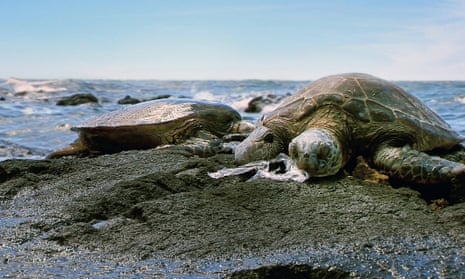1. We can’t keep up with waste management
More than 50% of ocean plastics are coming from rapidly developing geographies around the world, where population growth and increased plastics consumption is outpacing the capacity to manage waste. Even in the US, waste infrastructure is set up for a material mix that’s less relevant today.
“Plastic never dies, and that means every piece we ever produce will stay on this planet,” warns Cyrill Gutsch, founder of Parley for the Oceans.
A lot of areas don’t have the infrastructure to manage plastic, so even if consumers put their bottles in the right bins, it won’t necessarily end up being recycled.
2. We need action from governments and businesses
Tackling ocean waste will require a range of different policies that drive manufacturer participation, combined with voluntary efforts by companies. Key to this will be global corporate leaders that recognise the scale of the problem and its local impact.
3. It’s an economic as well as an environmental issue
We’re told of ocean plastic strangling seals and turtles swallowing it, but the mainstream media rarely frame the problem as an economic one.
Bridget Croke, head of investor and industry partnerships at the Closed Loop Fund, says some big consumer packaged goods companies are demanding more recycled content because they are concerned with the price volatility of raw materials. However, she says it’s early days and markets must be pushed pro-actively.
“We need to show [companies] that designing in a way that holds the value of the materials makes economic sense”.
4. Designers and recyclers often feel helpless
Just designing a product with its end-of-life in mind could have a big impact, says Jenna Jambeck, assistant professor of environmental engineering at the University of Georgia. She says that “so many issues [are] caused downstream from not considering this point in a product’s life cycle”.
But Sandy Roger from the Ellen MacArthur Foundation (EMC) points out that there’s a “kind of helplessness pervading this space”.
Consumer goods companies keen to design for recycling don’t know which system to design for because municipal recycling is so diverse, while municipalities and waste companies are overwhelmed by a growing and changing portfolio of plastics. “It’s a stalemate, and both sides end up with lowest common denominator solutions,” Roger says.
EMC is trying to bring together the two sides to allow more joined-up thinking, while Croke says the Closed Loop Fund is looking at packaging trends to make sure it builds appropriate infrastructure.
5. There are global solutions to this global problem
One way to solve the end-of-life problem would be to make simple products, such as yoghurt pots and shampoo bottles, from a single material that is recyclable around the world, suggests Alexis Haas, director of sustainability at Adidas. Currently, consumer goods are mostly made from mixed plastics, which are only suitable for downcycling.
6. There are also local solutions
Ben Kneppers, co-founder of Bureo Skateboards, explains that an artisanal fishing village in Chile was left with no choice but to burn or discard its old fishing nets. In giving the community the resources and opportunity to return nets for recycling, the company says it has prevented waste, created jobs and captured a valuable material for its skateboards.
Its business model works with both large and small fisheries and, according to Kneppers, results in “an amount of material 100 times more than we can make direct use of at the moment”.
7. We have to eliminate the ‘ick factor’
Shubhankar Ray, global brand director at G-Star RAW, says: “People buy what they desire in fashion, so eco-clothing needs to be cool and sexy to drive desire.”
The company’s Raw for the Oceans jeans collection, fronted by singer Pharrell Williams, is made from 35% recycled ocean plastic and 65% cotton. Eliminating preconceptions around reusing waste can push the idea of recycling, which is one part of the solution.
8. Labelling plastic bags like tobacco is not helpful
Adding a warning sign to plastic bags about the damage they can cause may not be a great solution. While Kneppers agrees that a lack of education is part of the problem, he believes that we would better engage consumers with positivity, by highlighting how small actions can protect the places we love.
9. A ban might not be best
“We need to be careful when proposing an all-out ban on any one material,” warns Nicholas Mallos, director of the Trash Free Seas programme. “If material substitutes are available to replace a given non-recyclable plastic, like cellophane, then it’s key to look at the entire life cycle and ensure we don’t replace one unintended environmental impact with another.”
Besides, a ban isn’t practical or actionable. Ray suggests that it would be better to lobby policy makers to put plastic reduction and suitable alternatives on serious agendas.
10. Together, we can take plastics off the market
“The problem we are facing is that plastic is simply the wrong material – it needs to be reinvented,” says Gutsch. “There is no need to use plastic straws, plastic utensils, plastic bottles, plastic bags … We can take these products off the market right away. By doing so, we show there is a movement happening, which motivates the research and development labs for material development.”

Comments (…)
Sign in or create your Guardian account to join the discussion